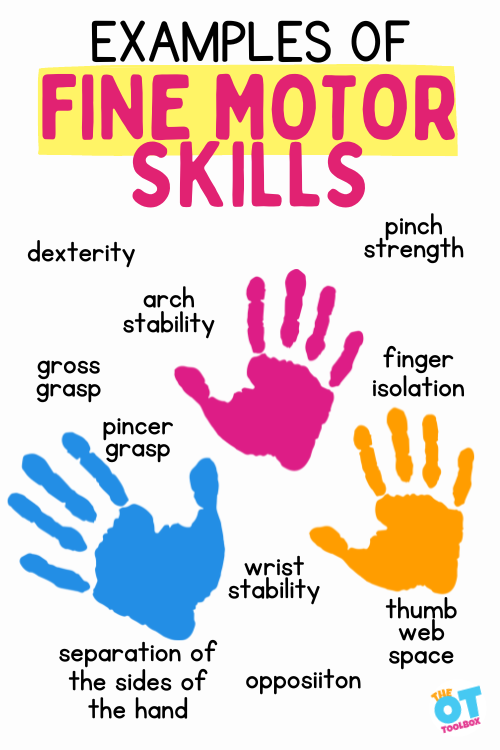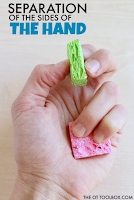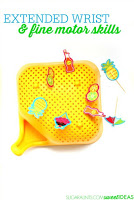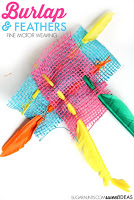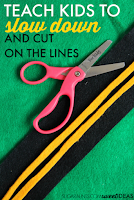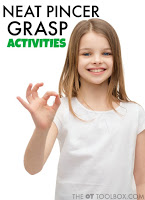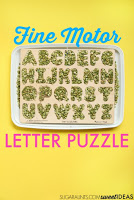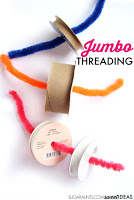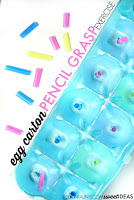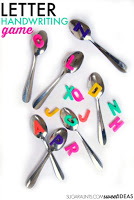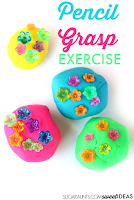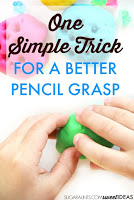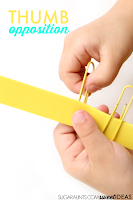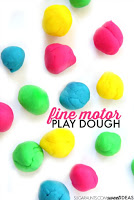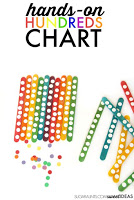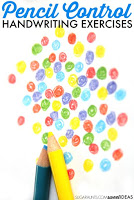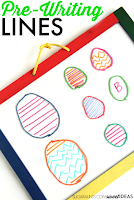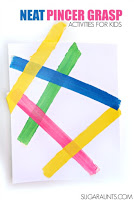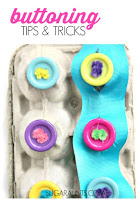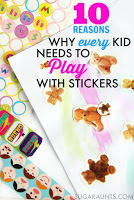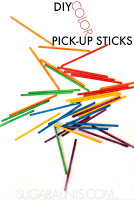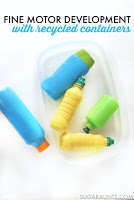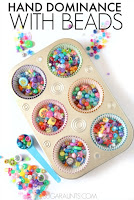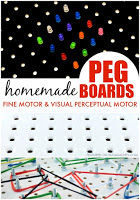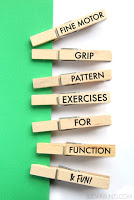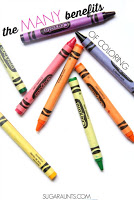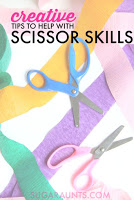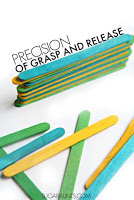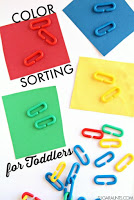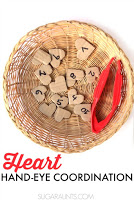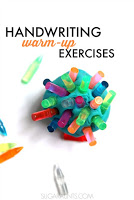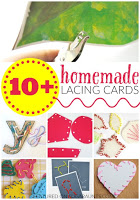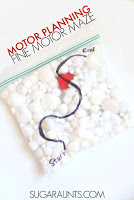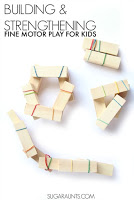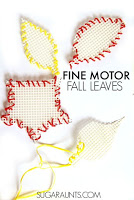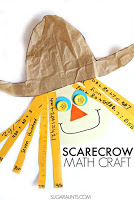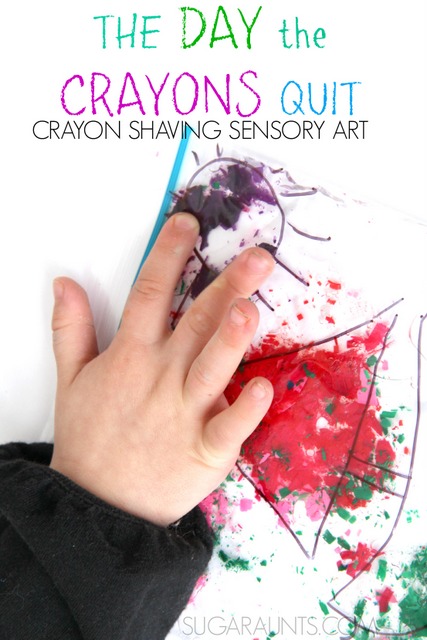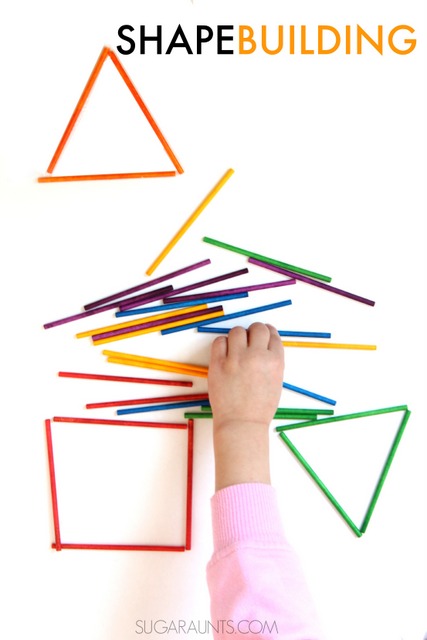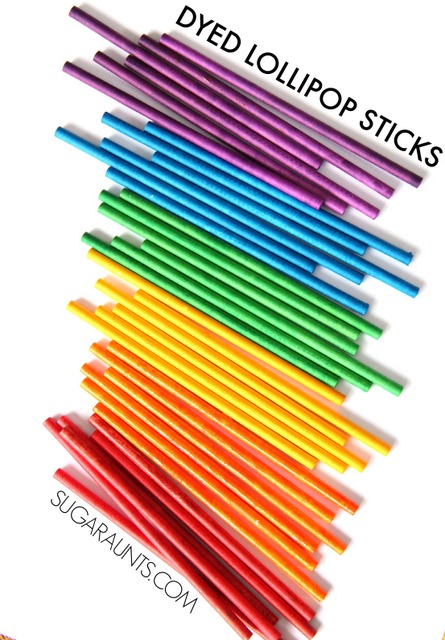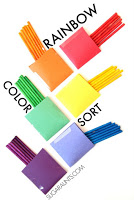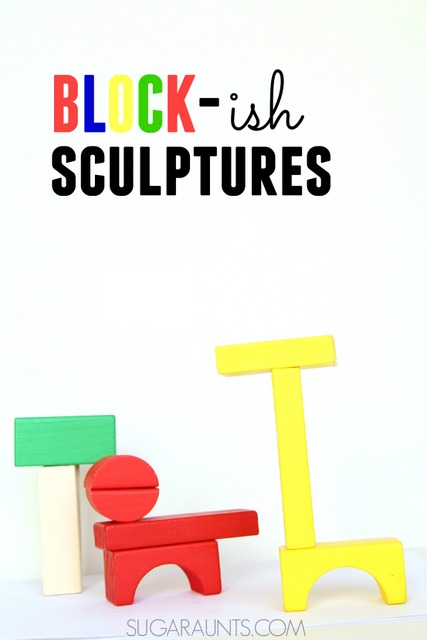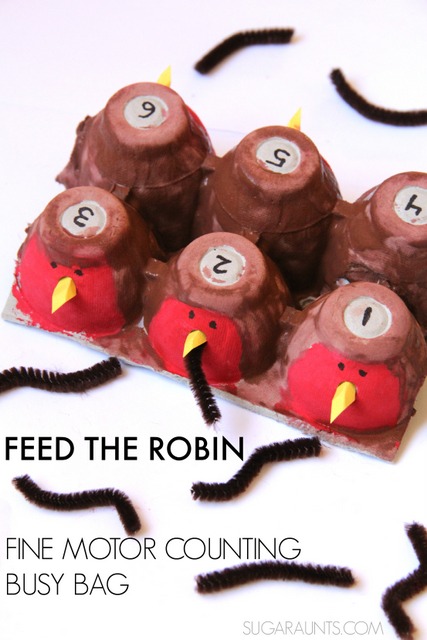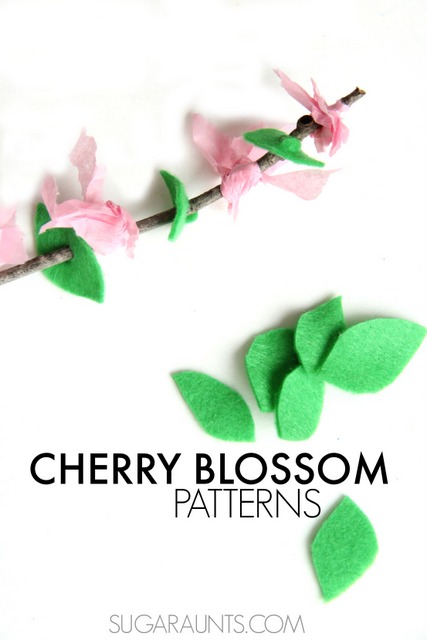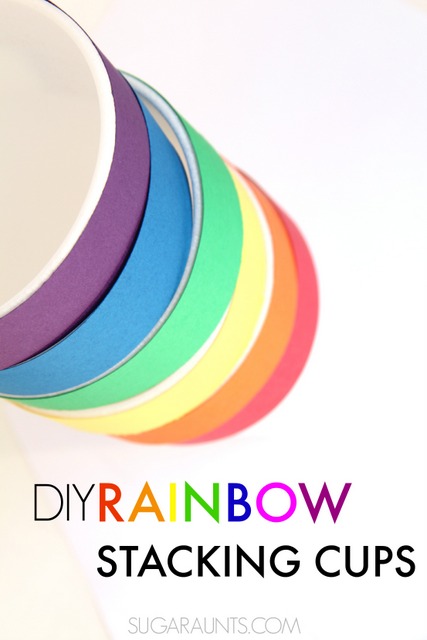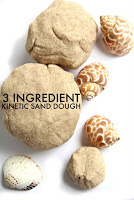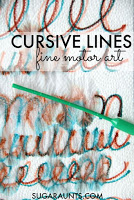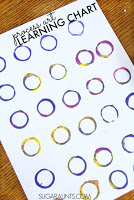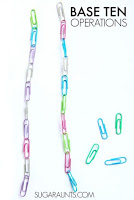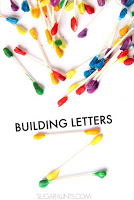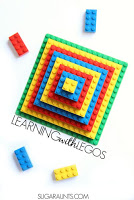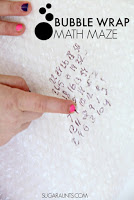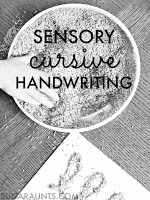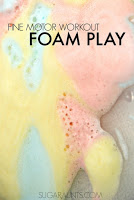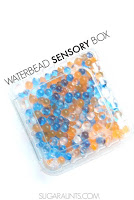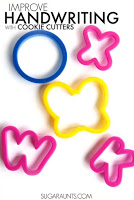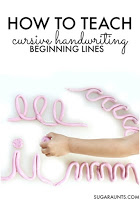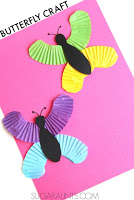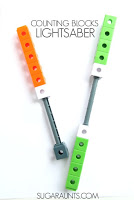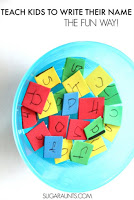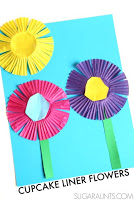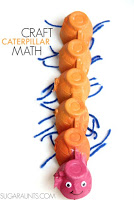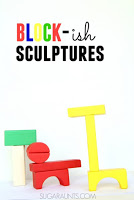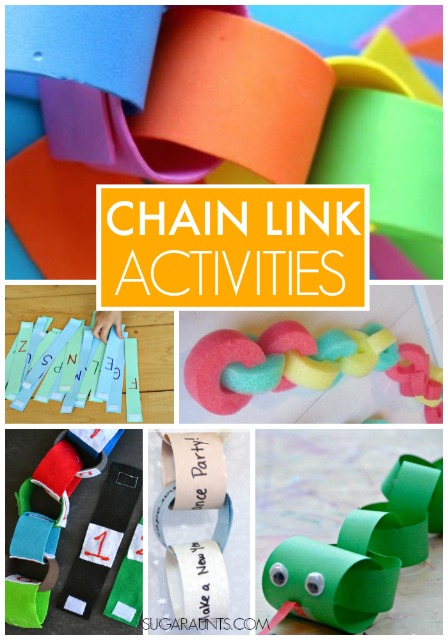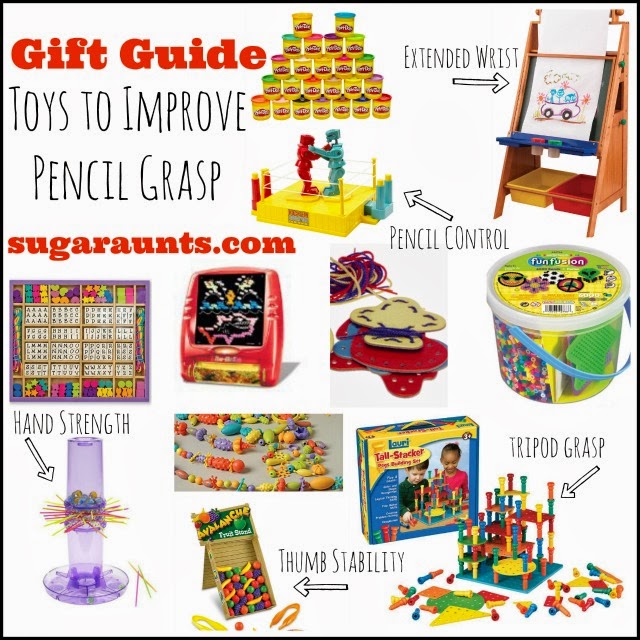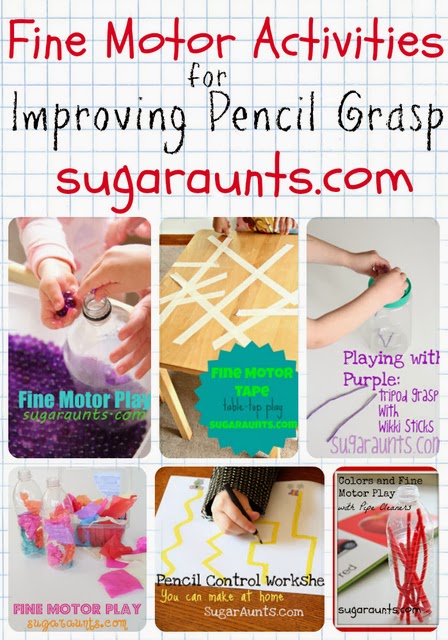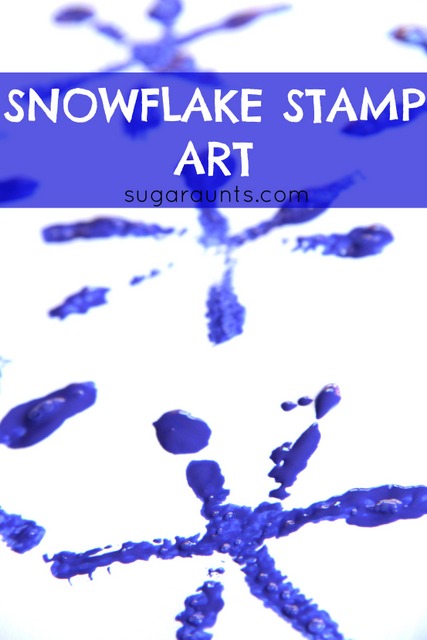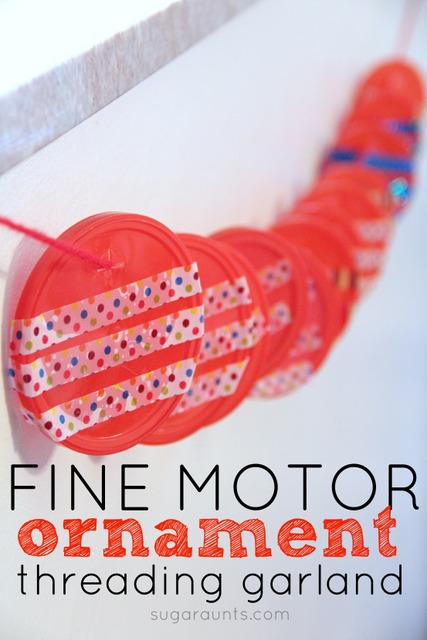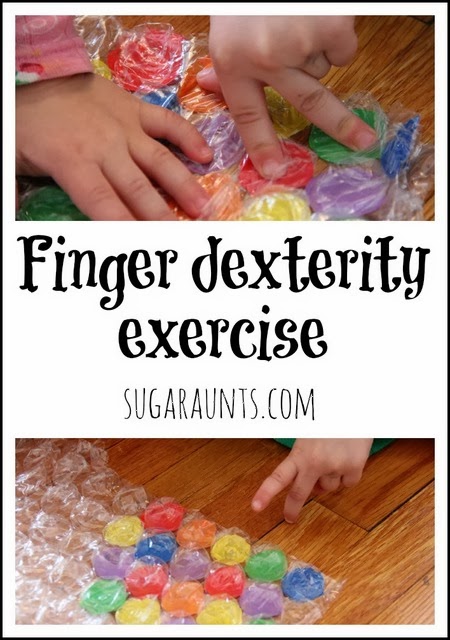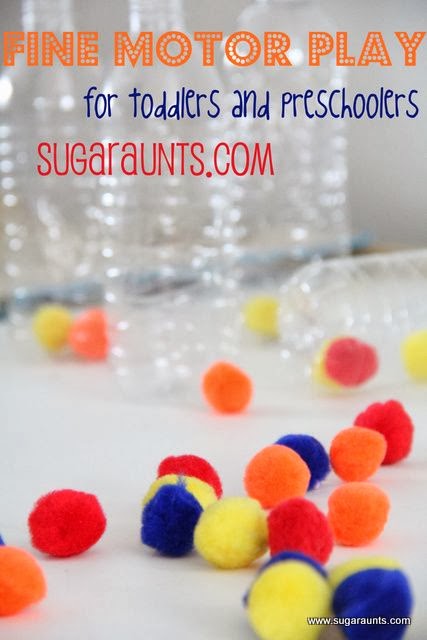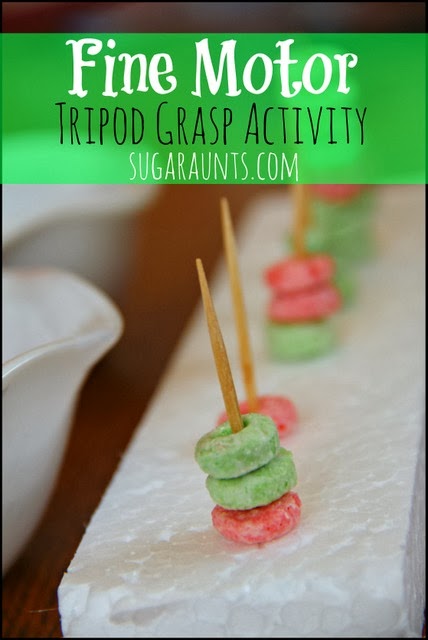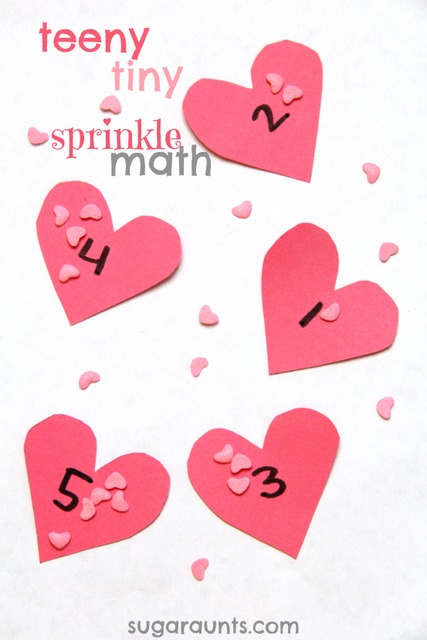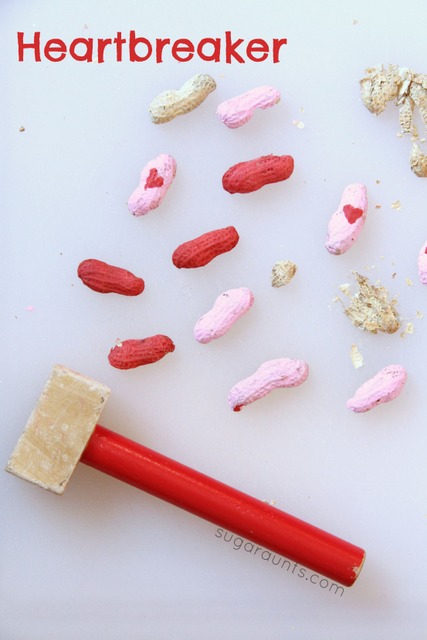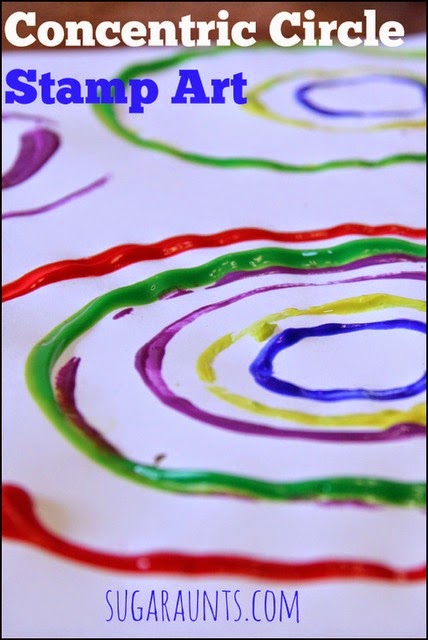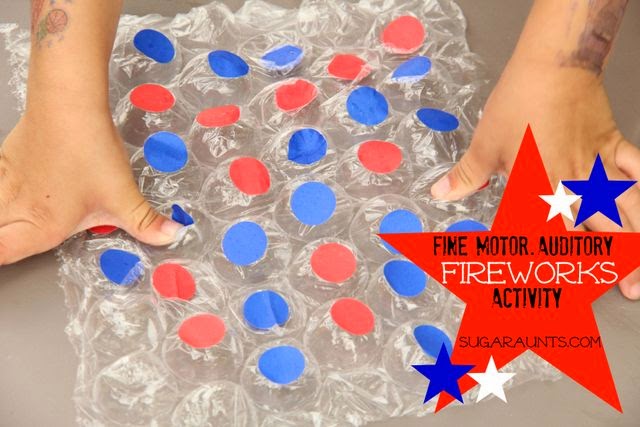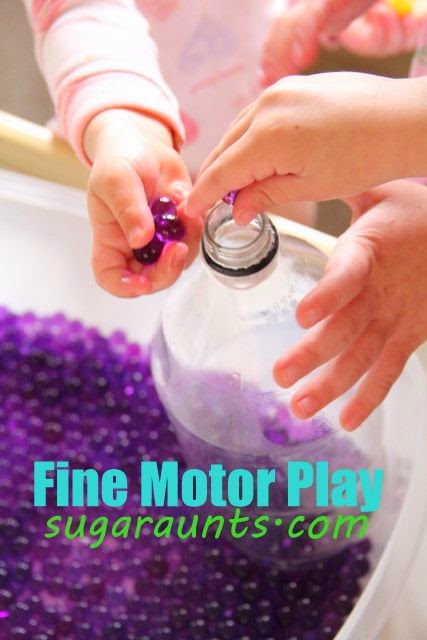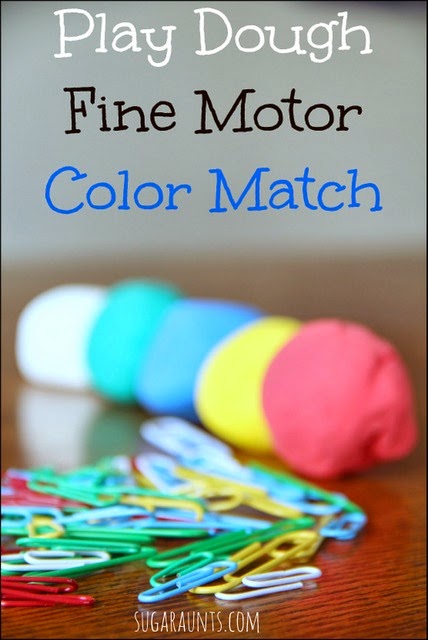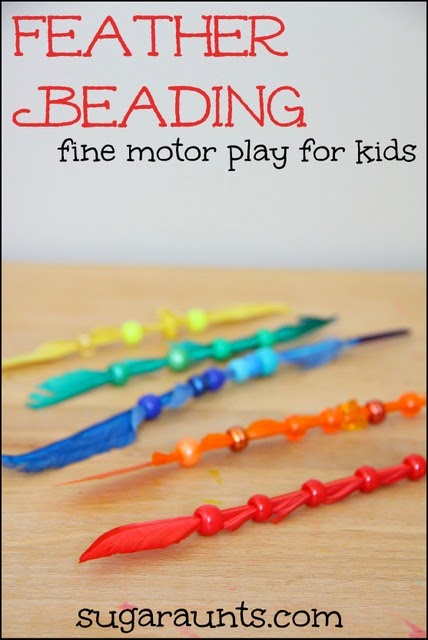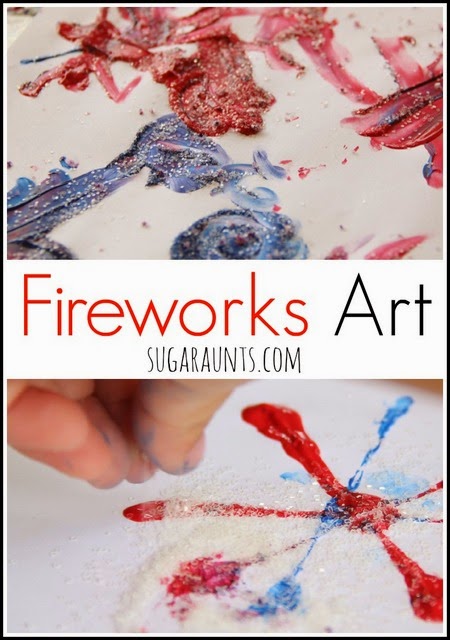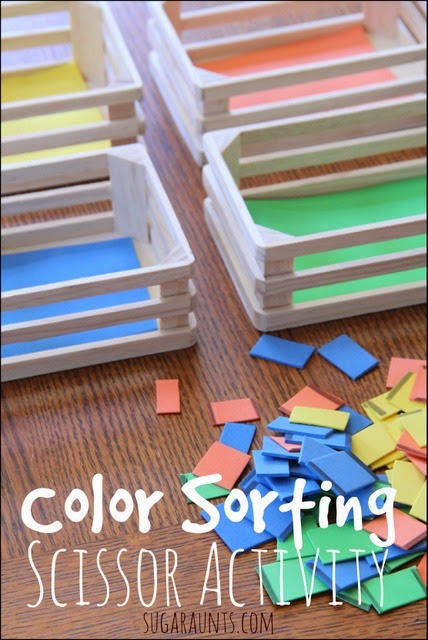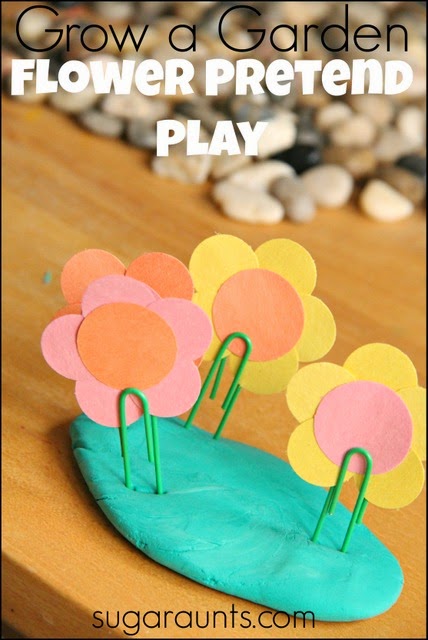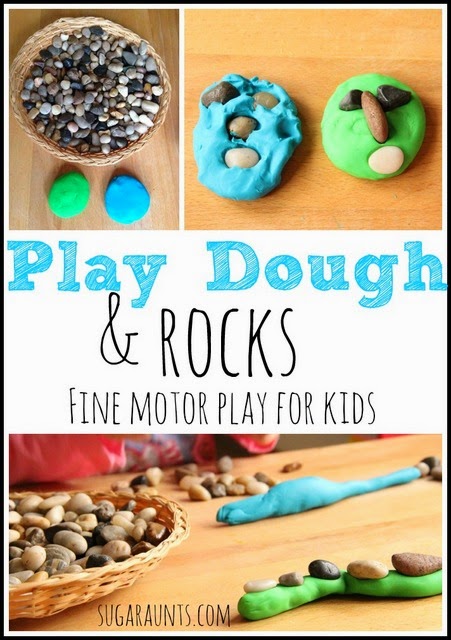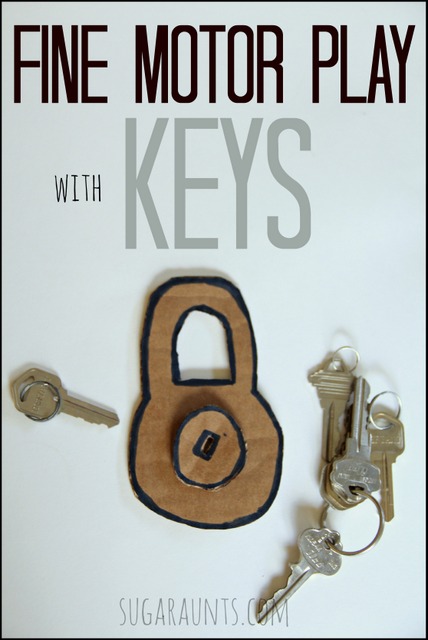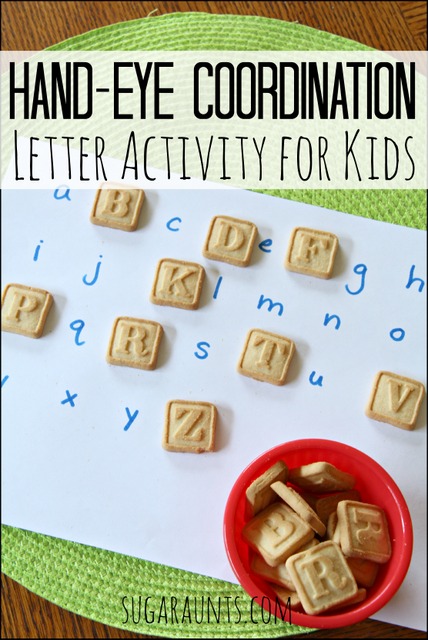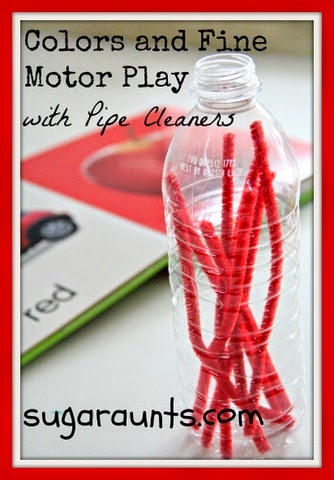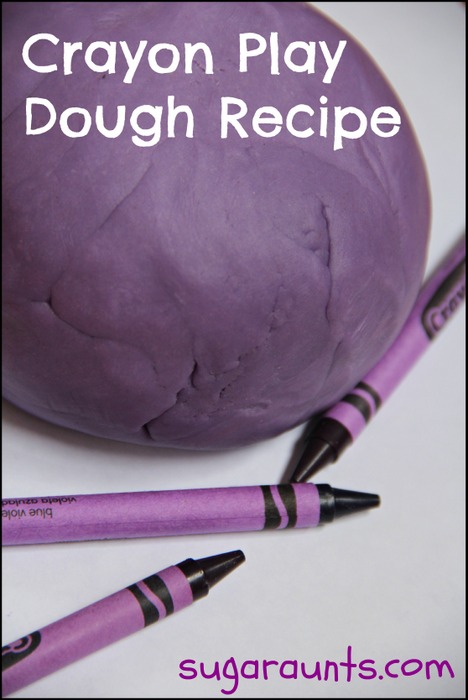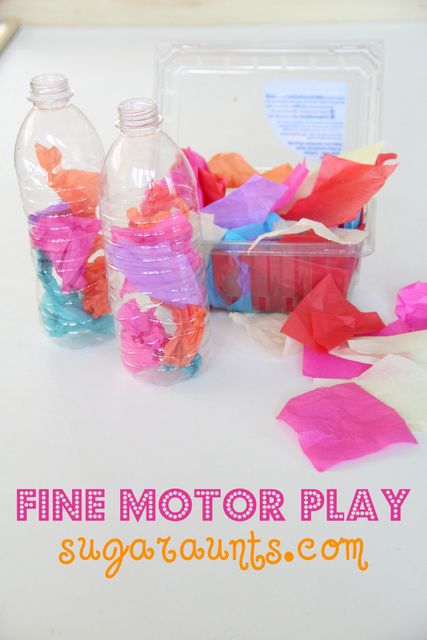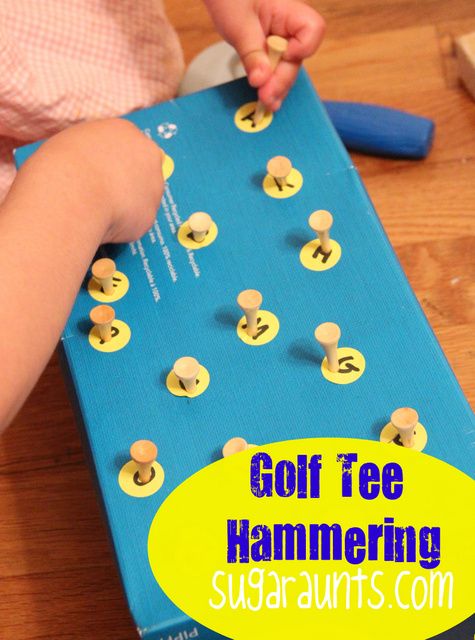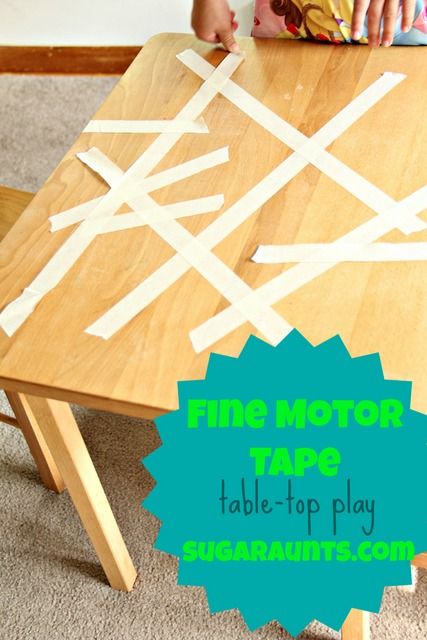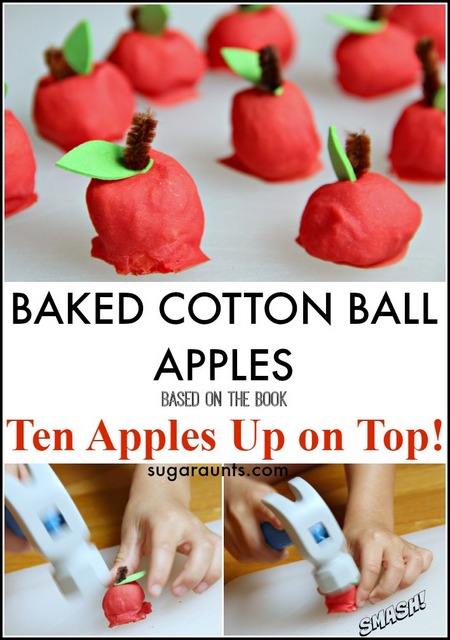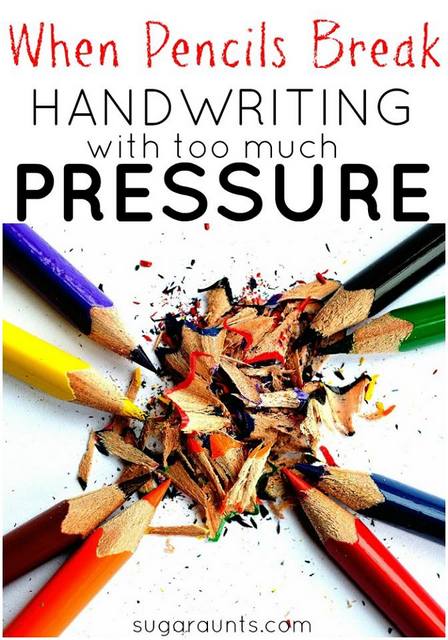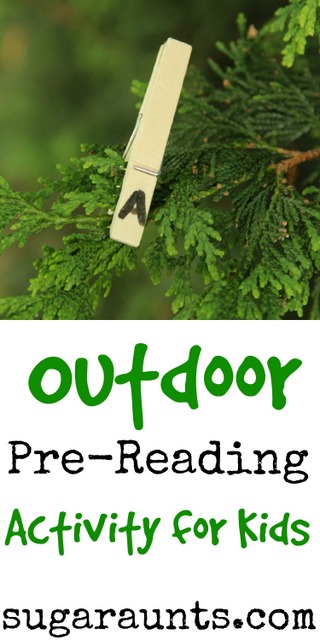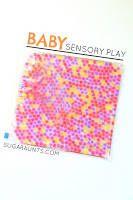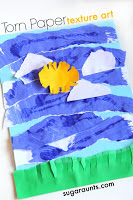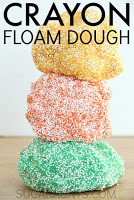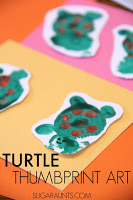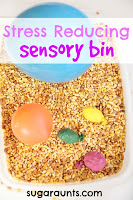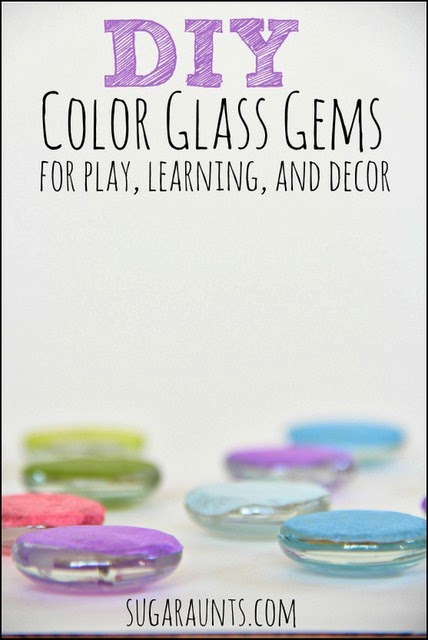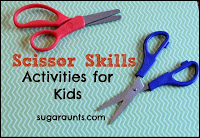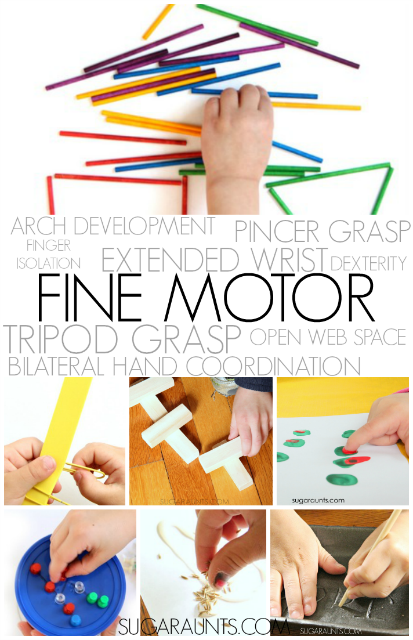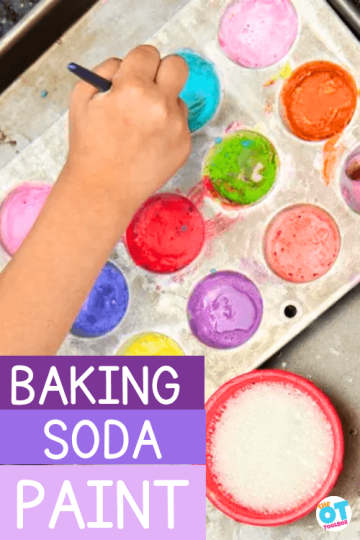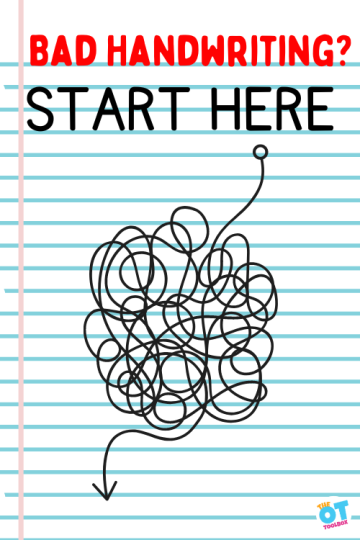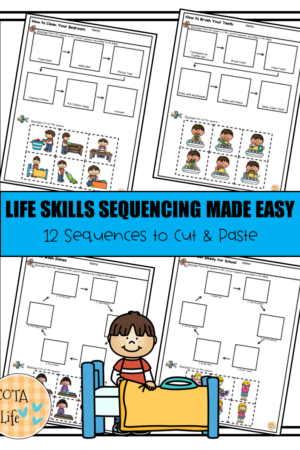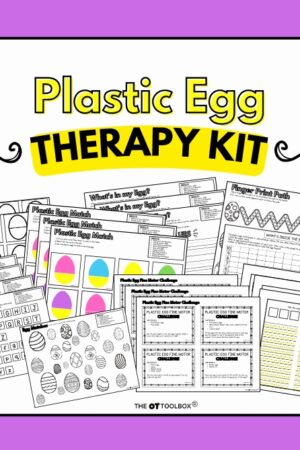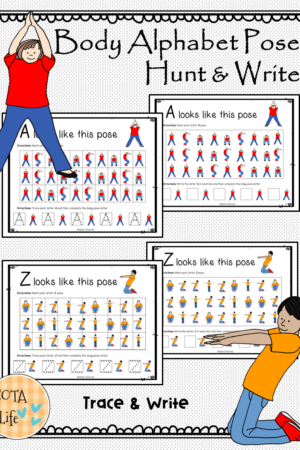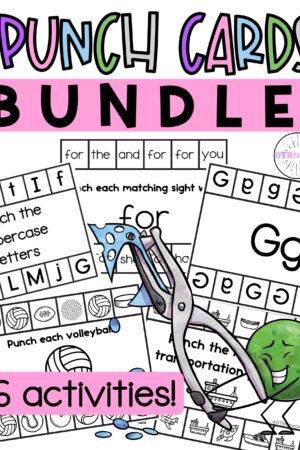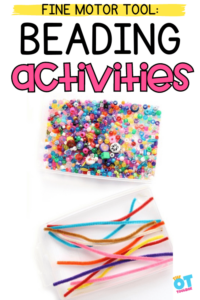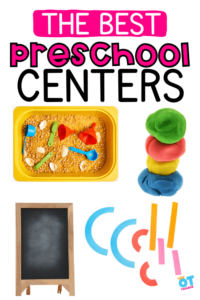Fine Motor Skills
So, what exactly are fine motor skills?
Fine motor skills refer to precision, finger dexterity, and coordination of the hands. These are the skills that allow us to use our hands to manipulate materials like pencils, containers, clothing fasteners, and little objects. There is so much more to it, though! Areas of fine motor development like bilateral coordination, pinch and grip strength, separation of the sides of the hand, arch development, finger isolation, thumb web space, and opposition all play a role in refined use of the fingers and hands. These fine motor milestones are the basis for everything our hands can do.
Fine motor skills involve the coordination of small muscles in the hands and fingers to perform tasks that require precision and dexterity. These skills are essential for various daily activities, including writing, feeding oneself, buttoning clothing, using utensils, and manipulating small objects.
Occupational therapists work on fine motor skills because they are crucial for achieving independence and participating in activities of daily living. Fine motor skills contribute to a person’s ability to engage in self-care, play, school, work, and leisure activities. When individuals have difficulties with fine motor skills, they may struggle to perform tasks independently, leading to frustration, decreased self-esteem, and limitations in participation.
Let’s get you started on activities, exercises, resources, and TOOLS to improve fine motor skills!
EXPLORE Popular Topics
What do all these words mean?
Fine Motor Skills
Fine Motor Skills impact function and hand use in small motor tasks. You may have heard the term fine motor skills before. If you are familiar with occupational therapy, then you know that fine motor activities are an integral part of OT interventions. The hands play an important role in most occupations that we perform. From writing, to tying, getting dressed, feeding ones self…most of our day to day tasks involve using our hands. So, when fine motor control and dexterity impacts functional performance, it can be a reason to work on motor control of the hands.
Here, we are covering all aspects of fine motor skills when it comes to children. We’re covering fine motor development, each aspect of fine motor skills, and fine motor activities that are rooted in play and learning to develop these essential skills of the hands.
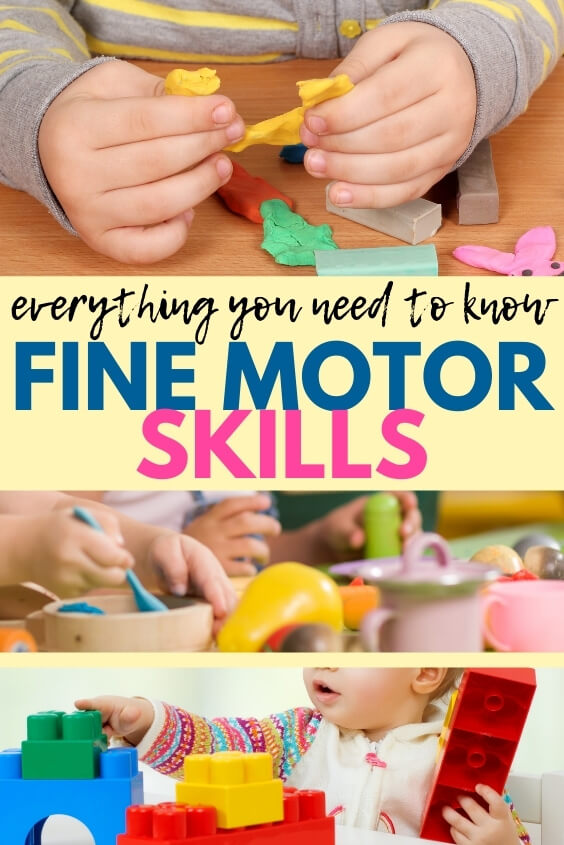
Fine motor skills are a part of everything we do!
What are Fine Motor Skills?
Fine motor skills are the refined movements and actions of the hands, fingers, and wrists that enable precision and dexterity of movement. Fine motor skills can be broken down into different motor components that impact the ability to use the hands in functional tasks and tool use.
Fine motor skills are necessary for every task that a child completes. From play, self-care, to managing clothing fasteners, and coloring, motor skill development is needed for every aspect. Fine motor skill development is essential to pencil grasp and handwriting.
Various grasp patterns are used for fine motor tasks and manipulating objects within daily tasks we do all day long. Fine motor skills make up a huge part of learning and the school day (Read about the various fine motor skills needed at school.)
Motor skills like pincer grasp and hand strength are essential for a child’s development and ability to use their hands in small motor movements.
Fine Motor Skills Examples
Fine motor skills involve the use of small muscles in the hands and fingers to perform precise movements. Here are some examples of fine motor skills:
Pincer Grasp: The ability to pick up small objects using the thumb and index finger in a coordinated manner. For example, picking up a cheerio or a small bead. This also looks like threading a needle or turning the page of a book.
Precision Grasp: Grasping objects with the fingertips and thumb without the involvement of the palm. This skill is essential for activities like holding a pencil or using tweezers. Other examples include managing a zipper or buttoning a shirt.
Hand-Eye Coordination: The ability to coordinate visual information with hand movements. Activities such as catching a ball, threading a needle, or playing a musical instrument require good hand-eye coordination. Other examples include cutting shapes with scissors, and writing with a pencil.
Manipulating Objects: The skill of manipulating objects using the fingers and hands. This includes tasks like turning the pages of a book, tying shoelaces, or using scissors to cut along a line. Still more examples include pressing the top of a plastic sandwich baggie closed, opening containers and food packets, playing with small toys, snapping LEGO, etc.
Writing and Drawing: The ability to control a writing utensil to create legible letters, shapes, and drawings. This skill involves precise hand movements and coordination.
Self-Care Tasks: Fine motor skills are essential for activities of daily living, such as buttoning clothing, zipping a zipper, brushing teeth, and using utensils during meals.
Fine Motor Games and Activities: Activities like building with blocks, playing with puzzles, stringing beads, and manipulating playdough help develop fine motor skills through play and exploration.
Keyboarding and Typing: Using a keyboard or touchscreen device requires precise finger movements and coordination to type accurately and efficiently.
Art and Crafts: Engaging in activities such as coloring, painting, cutting with scissors, and crafting helps develop fine motor skills while encouraging creativity and self-expression.
Instrument Playing: Playing musical instruments, especially those that require finger dexterity, such as piano, guitar, or violin, enhances fine motor control and coordination.
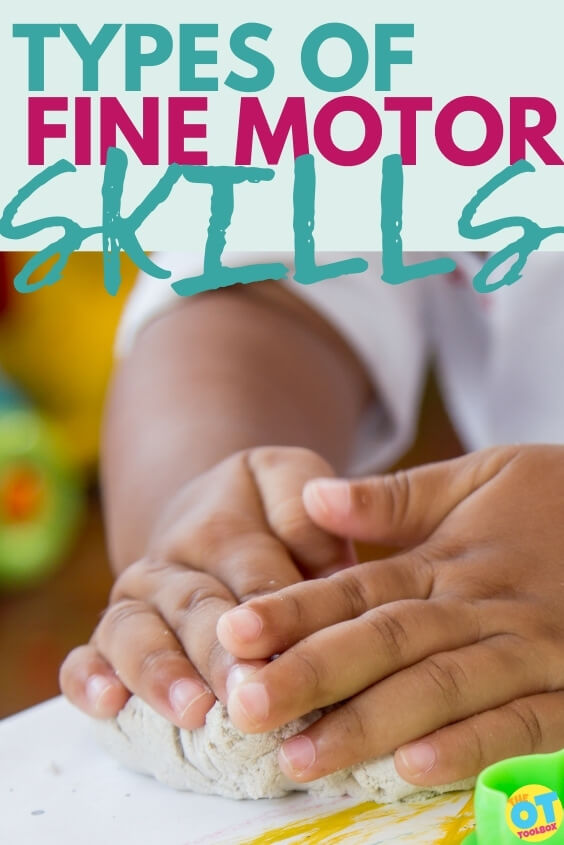
There are various components of fine motor skills that impact function.
Components of fine motor skills
Fine motor skills are made up of several components of motor skills using the fingers and hands. Related, and an important piece of the fine motor puzzle, are the core stability, strength and positioning of proximal positioning, strength, and gross motor skills. Developmentally proximal positioning, strength and stability and motor skills enable distal mobility and coordination.
Occupational therapy practitioners assess fine motor skills and develop interventions to address deficits or delays in this area.
These interventions may include:
Therapeutic Activities: Occupational therapists use purposeful activities and exercises to improve hand strength, coordination, and control. These activities may involve using playdough, manipulating small objects, stringing beads, or completing puzzles.
Sensory Integration: Sensory input plays a crucial role in fine motor development. Occupational therapists may incorporate sensory-based activities to enhance proprioception, tactile discrimination, and motor planning, which are essential components of fine motor skills.
Handwriting Skills: Occupational therapists often work with children to improve handwriting legibility, speed, and fluency. They may provide specialized instruction in pencil grasp, letter formation, and spatial organization to promote efficient written communication.
Adaptive Strategies: Occupational therapists teach individuals adaptive strategies and use of assistive devices to compensate for fine motor difficulties. This may include recommending ergonomic tools, adaptive utensils, or assistive technology to facilitate participation in daily activities.
Fine motor skills are made up of various motor components. These sub-areas impact mobility, tool use, manipulation of objects, strength, and endurance. These examples of fine motor skills are needed for everyday tasks like cutting with scissors, tying shoes, fastening buttons and zippers, coloring, and holding a pencil.
Let’s cover all of these fine motor areas in more detail:
- Bilateral hand coordination– Coordinated use of both hands together, or using one hand as a stabilizer and one hand as a manipulating hand. Bilateral coordination includes three components: Symmetrical movements, Alternating movements, and Dominant hand/supporting hand movements.
- Also called bilateral integration, the movements of both hands together in activities requires processing and integration of both hemispheres of the brain to enable both hands working together at the same time, or bilateral movements. Without bilateral coordination, a child might appear to be clumsy or drop items, use primarily one hand in activities, or switch hands during tasks that require a dominant hand and a helper hand. Development of bilateral coordination skills is powerful in functional skills like self-feeding, handwriting, self-dressing, grooming, and more.
- Gross grasp– Gross grasp is used when squeezing all of the fingers shut around an object, like when holding the handle of a suitcase. Gross grasp is important in tasks like handwriting and scissor use. To do these activities, you need to squeeze your whole hand shut and maintain endurance to complete the activity. Development of hand arch and thumb web space is important for these functional skills and gross grasp plays a part.
- In-hand manipulation– In hand manipulation refers to the ability to manipulate objects within the hand. Manipulation of objects within the hand includes three aspects of mobility: translation, shift, and rotation of objects.
- Translation is using your fingers to moving a little item from your palm to your finger tips (or your fingertips to squirrel the item into the palm). When you hold a coin in your palm and manipulate it to your finger tips to push it into a piggy bank or vending machine, you are demonstrating palm-to-finger translation.
- Shift is moving an object using the pads of your fingers…adjusting the pencil grip is demonstrating finger shift. Another example might be manipulating a button or a zipper with the finger tips.
- Rotation is rolling an object using the fingertips. Examples of rotation are rolling a pencil in your fingertips, turning a pencil over to use the eraser, or opening a bottle top by rotating the lid on your finger tips.
These fine motor skills are needed for functional tasks like managing a pencil or crayon during handwriting, opening containers, managing coins or small items, manipulating a spoon/knife/fork, adjusting the paper when cutting with scissors, and fastening buttons or shoe laces.
- Pincer grasp– Pincer grasp refers to pad-to-pad grip needed to pick up small bead-sized objects. Pincer grasp is important for many fine motor tasks. Any functional skill that involved holding items between the thumb and index finger are based on effective development of pincer grasp.
- Neat pincer grasp– Neat pincer grasp uses the tips of the thumb and pointer finger to stabilize objects. When using a pincer grasp, children use the pads of the thumb and finger to stabilize the object. Neat pincer grasp is used to pick up very small items such as perler beads, a thread from a surface, or a needle. You might see the tip-to-tip grasp to pick up a sequin or fuzz from clothing.
- Tripod grasp– Tripod grasp is the opposition of the thumb to the pad of the pointer finger and middle finger when grasping and manipulating objects. Tripod grasp is the optimal (though not the only functional grasp) used to hold and write with a pencil.
- Strength– When kids have a functional finger strength levels, they are able to write and color with endurance. They are able to manipulate small items. Finger strength looks like the ability to open and close plastic baggies and other meal containers at lunch time in the school lunch room. It looks like the ability to manipulate clothing fasteners like buttons, snaps, and even the buckle on a car seat. Finger strength can be tested to see if grip and pinch strength are at typical levels for the child’s age, but if you are noticing that activities the child should be accomplishing like managing items is hard, you can look into hand strengthening and grip strength exercises in more depth.
- Open thumb web space– The thumb web space is that space between your thumb and pointer finger that makes an “O” when you make the “OK” sign. In order to grasp small items with your thumb and index finger, you need to oppose the tip of your thumb to the tip of your pointer finger. Not only do the tips of the fingers need to touch, but the thumb must rotate at the joint closest to your hand. This opposition is needed to manipulate and grasp small items like shoe laces, buttons, and zippers.
- Separation of the sides of the hand– Separation of the sides of the hand refers to the imaginary line drawn from your wrist directly down the middle of your hand and between your ring finger and middle finger, separating the precision side of the hand (thumb, pointer finger, and middle finger) with the power side of your hand (pinkie finger and ring finger). These two sides work together in skilled activities with precision and power grasp in functional activities.
- Eye-hand coordination– Eye-hand coordination, or Visual motor skills, refers to the coordination of visual input and the processing of that visual information for coordinated movement of the hands. These skills impact fine motor dexterity and motor movements in functional tasks for so many tasks while manipulating movements and objects. Eye-hand coordination is essential in handwriting, scissor use, threading beads, reading, throwing a ball, placing a cup on a shelf, coloring in lines, feeding, self-care, playing with Wikki Stix, and much, much more.
- Wrist extension– A slightly extended wrist or neutral wrist allows for a functional grasp and optimal position of the fingers in opposition to the thumb. Wrist stability enables the fingers to manipulate objects without the wrist moving around. Proximal stability is needed for distal mobility and this applies in the wrist in relation to the hand and fingers.
- Arch development– Arch support in the hand is related closely to the separation of the sides of the hand. Refinement of fine motor skills in the hand (the radial side) happens when the power half (the ulnar side) is stabilized. A functional fine motor grasp and manipulation of objects is more accurate when the ring and pinky fingers are flexed (bent) into the palm. This positioning stabilizes the MCP arch and allows for control of the pointer and middle fingers. Separation of the two sides of the hand allow for more precise use of the thumb. Hand separation starts when a baby bears weight through their arm and ulnar side of the hand while carrying a toy in the radial side. This simple activity developmentally lengthens the muscles of the ulnar side.
- Intrinsic hand strength– The intrinsic muscles are the muscles in the hand that define the arches of the hands, bend the knuckles, and oppose with the thumbs. Among these muscles are a group called the lumbricals. The lumbrical muscles have a job to bend (flex) the MCP joints and extend (straighten) the PIP and DIP joints. When the lumbricals are in action, the hand might look like it is holding a plate with the big knuckles bent and the fingers extended.
- Thumb IP joint flexion– The thumb interphalangeal joint is responsible for flexing or bending the end of the thumb. the joint allows us to pick up very small items in pincer grasp and enables a functional tripod grasp while holding a pencil. Sometimes, kids hold their pencil with the thumb IP joint in a hyper-extended position as a result of weakness or lax ligaments and in effort to provide stability while moving the pencil. Other times, kids wrap their thumb over the pencil in a thumb wrap grasp as a result of weakness and also in attempt to provide stability in handwriting.
- Thenar eminence strength (thumb side of the hand)– Separation of the sides of the hand divides the hand into halves. The thumb side has a fleshy mass below the base of the thumb called the thenar eminence. These muscles pull the thumb into a bent, flexed position and opposition. positioning stabilizes the MCP arch and allows for control of the pointer and middle fingers.
- Hypo thenar eminence strength (pinkie side of the hand)- That same separation of sides divides the pinkie side of the hand. Along the length of the pinkie side is the power muscles which help with stabilization of the hand during precision tasks such as writing with a pencil or cutting with scissors. A cupped palm requires engagement of the hypothenar eminence in order to hold objects in the hand. Hand separation starts when a baby bears weight through their arm and ulnar side of the hand while carrying a toy in the radial side. This simple activity developmentally lengthens the muscles of the ulnar side.
- Opposition– Opposition of the thumb means the tip of the thumb touches the tip of a finger, or the fleshy pad of the thumb touches the pad of a finger. When opposing the thumb to the fingers, small objects are able to be held and manipulated. When opposing, the thumb’s thenar muscles work to advancing and positioning objects pencil when writing, managing a button with ease, and pulling a zipper. Rotation of the thumb at the CMC joint is needed in collaboration with flexion of the MCP joint and IP joints. With a closed thumb web space and lateral pinch of the thumb versus true opposition, a child will fumble.
- Cylindrical grasp– A cylindrical grasp is one in which the whole hand is in contact with an object, and curved with thumb opposition. A common term for this grasp is gross grasp. A cylindrical grasp requires use and strength of the extrinsic muscles and intrinsic muscles of the hand in order to flex the fingers around curved objects. The thumb is positioned in flexion and abduction. A cylindrical grasp is needed in order to hold a broom handle, baseball bat, and ice cream cone.
- Spherical Grasp– A spherical grasp is one in which the hand curves to hold a round or sphere-shaped object. The intrinsic muscles of the hands play a big part in this grasp. In order for the hand to curve, the metacarpal phalangeal joints need to abduct. Involved in this action are the interossei muscles and the hypothenar eminence. The interossei include the palmer interossei and the dorsal interossei. These allow the fingers to abduct and adduct in order to grasp smaller and larger sphere shaped objects. The hypothenar eminence includes three intrinsic muscles that allows the pinkie side of the hand to flex, rotate to oppose the thumb, and create the bulk of the pinkie side of the palm when curving around shapes like spheres.
- Finger isolation– Finger isolation is the ability to isolate and use the fingers one at a time in functional tasks. Finger isolation is using one finger to perform a task. Pointing with the index finger, wiggling all of the fingers individually, and counting out the fingers on your hand are finger isolation. This finger isolation is needed for many functional activities, like dexterity in managing pencils, paintbrushes, and other tools, typing on a keyboard, tying shoes, finger games like “Where is Thumbkin?” and many other skills.
- Hand dominance– This ability to utilize a dominant hand and a non-dominant hand in activities indicates a maturation of the brain and lateralization in functional tasks, which is very important for motor planning, directionality, and visual motor skills.
- Core strength and stability– A weak core leads to weak fine motor skills distally. The engaged and strong muscles of the abdomen and upper body allow for strength and engagement of the upper arm, and in turn leads to dexterity and motor control of the hands. When the core is weak the hands can not effectively do their job to hold the pencil and manage tasks such as eye-hand coordination, bilateral coordination, and in-hand manipulation.
- Precision– precision refers to the fine movements of the hand. Precision release is needed for stacking blocks without toppling them over, placing cards on a pile, opening scissors just a small amount, or placing small beads into a bowl. Precision is needed for a child to let go of an item in a controlled manner. If they are not exercising precision in release, you might see them rolling or tossing an object as they let go. They will knock over a stack of blocks, or over open the scissors when cutting lines, making their accuracy very choppy.
- Precision in grasp is related to the picking up of items. A graded lateral grasp is needed to cut with scissors and only squeeze the scissors halfway shut for accurate cutting lines in some situations. Around 3-4 years, a preschool aged child typically develops a greater variety of grasping patterns, including precision. They begin to grade their scissor strokes so that they can cut a line or shape without opening and closing the scissors completely. Precision in this skill occurs when the child is able to pick up very small items like beads with accuracy and graded movements.
- Shoulder stability- Proximal stability of the shoulder is needed to support and stabilize distal movements. Activities that challenge the shoulder against gravity such as working on an inclined surface can strengthen and stabilize the shoulder girdle.
These are just a few examples of fine motor skills that are essential for functional development and effective manipulation of tools.
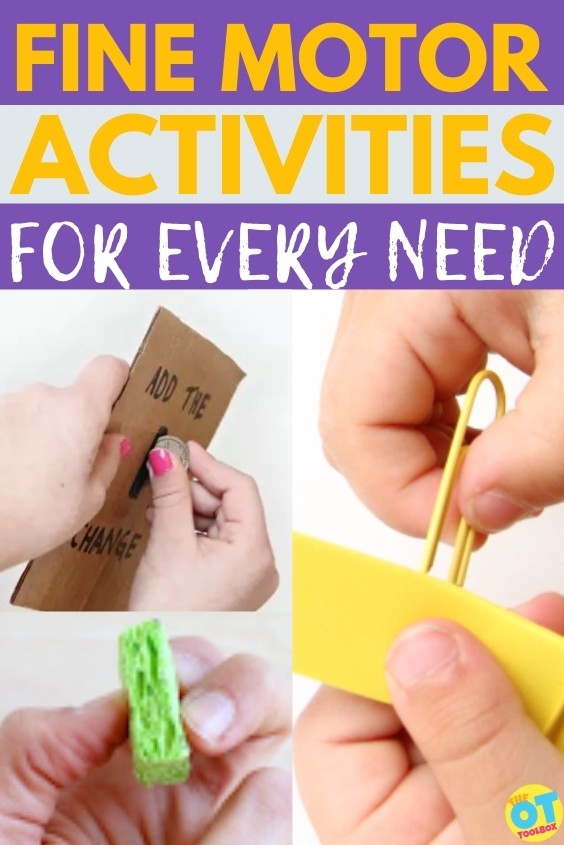
Fine motor activities like placing paper clips on the edge of a piece of paper supports motor skill dexterity.
Fine Motor Activities
Almost every activity you see here contains developmental information and explanations of what skills your child will be working on with the activities. I love to discuss the basics of playful activities and why it helps with developmental skills and functional tasks like handwriting, scissor skills, dressing, and shoe tying.
The fine motor skills that we share in the creative activities below are some of our favorite ways to play! Read specifics about building fine motor skills through play.
This page is a huge resource of fun ways to play and learn while working on fine motor skills. Most activities here are easy prep and use recycled materials or items you might find around the home. Occupational Therapists can use these activities in treatment and parents can do these projects at home for quiet time or developmental skill-building.
Add these fine motor activities to your therapy tool box:
One way to work on fine motor skills is to use one material for a variety of skill areas. We’ve put together some resources to just that! Try these specific tools to work on fine motor skill development in kids:
- Fine motor development with clothespins
- Fine Motor Activities with Play Dough
- Fine Motor Activities with Paper Clips
- Fine Motor Activities with Craft Pom Poms or Cotton Balls
- Fine Motor Activities with Playing Cards
- Fine Motor Activities with Beads
- Fine Motor Activities with Chalk

Fine motor activities can include any aspect of play, at age-appropriate levels and based on the interests of the individual.
Fine Motor Skills Activities for Kids
Click around for fine motor fun and learning.
At the bottom of this post you’ll find fine motor activities sorted by category.
- Separation of the sides of the hand activity- Use sponges to work on separation of the sides of the hand and a tripod grasp with precision of grasp and release.
- Use Sidewalk Chalk to Build Fine Motor Skills- Improve hand strength and endurance with the resistance of side walk chalk. This is a great fine motor activity for building a stronger shoulder girdle and shoulder stability as well as core strength.
- Teach a Better Pencil Grasp with Molded Crayons- Add resistance to tripod grasp and arch development with these molded crayons.
- Extended Wrist Fine Motor Activity- Work on wrist stability and wrist positioning with flexion and precision distally in this fine motor activity.
- Fine Motor Feather Burlap Weaving-Work on bilateral coordination, eye-hand coordination, and precision of grasp.
- Teach Kids to Slow Down and Cut on the Lines– Graded grasp and release is needed to cut with scissors. This activity also works on separation of the sides of the hand and arch development.
- Neat Pincer Grasp Activities– These neat pincer grasp activities work on precision, tip to tip grasp, and opposition with precision and dexterity.
- In-hand Manipulation Letter Puzzles– Work on the various types of in-hand manipulation through play with this letter puzzle activity.
- In-Hand Manipulation with Coins– A functional activity that uses coins can build translation of objects from the palm to the fingertips and the fingertips to the palm.
- Jumbo Fine Motor Skills Threading Activity– Work on bilateral coordination, tripod grasp, eye-hand coordination skills, and more.
- Intrinsic Muscle Strength with an Egg Carton– Build arch strength, precision skills, eye-hand coordination, bilateral coordination, and refinement of the internal muscles within the hand to build endurance in fine motor tasks.
- Magnetic Spoons and Handwriting Game– Work on eye-hand coordination, precision, refinement of grasp and release. Other skills include shoulder strengthening, wrist stability, and grasp.
- Pencil Grasp Trick Thumb IP Flexion– This simple strategy builds hand strength, flexion of the thumb IP joint, opposition, and rotation of the thumb CMC joint for functional use and an open thumb web space.
- Thumb Opposition– Use simple objects found around the home to build refinement of opposition including strengthening of pinch and grasp.
- Fine Motor Play Dough Intrinsic Muscle Strength– Work on hand strength of the intrinsic muscles using play dough balls. Work on finger isolation as well and endurance needed for functional tasks such as coloring and handwriting.
- Rainbow Hundreds Chart– Improve precision, neat pincer grasp, bilateral coordination, eye-hand coordination, and much more with this fine motor activity.
- Pencil Control Exercises– Work on functional grasp and eye-hand coordination, or visual motor skills with these pencil control exercises that will impact handwriting legibility in big ways.
- Pre-Writing Handwriting Lines– Pre-wiring lines is a fine motor activity that requires visual motor integration. Use of a pencil or crayon at pre-writing ages will impact handwriting skills in the elementary years when writing is essential for education.
- Benefits of Stickers in Occupational Therapy– Work on precision, strength, and dexterity, as well as other ways to build motor refinement using stickers.
- Neat Pincer Grasp Fine Motor Activity– Address fine motor dexterity and precision with neat pincer grasp activity you can do right now.
- Buttoning Tips and Tricks– Build the skills needed to fasten and unfasten buttons using this fine motor activity that works on opposition, eye-hand coordination, open thumb web space, separation of the sides of the hand, and more.
- Travel Sensory Diet Bag– Use these fine motor activities to add proprioceptive input in the form of heavy work through the hands.
- Homemade Pencil Grip– Improve tripod grasp, open thumb web space, thumb IP joint flexion, and eye-hand coordination using this DIY pencil grip.
- DIY Pick-Up Sticks– Address precision, graded grasp and release, motor skills, and more.
- Gross Grasp with Recycled Containers– Build hand strength, cylindrical grasp, opposition, translation, and even in-hand manipulation using objects you have in the home.
- Finger Isolation Fingerprint Activities– Work on finger isolation, separation of the side of the hand, arch strength, and refined motor skills.
- Hand Dominance and Fine Motor with Scooping and Pouring– Build eye-hand coordination, precision, grasp and release, laterality, directionality, hand dominance, shoulder stability, crossing midline, and motor planning skills.
- The Benefits of Coloring– Work on hand strength, endurance, precision, eye-hand coordination, motor planning, and more.
- Clothes Pin Exercises and Pinch Grasp Types– Improve pinch and grip strength, eye-hand coordination, grasp and release, arch development, separation of the sides of the hand, hand dominance, and bilateral coordination.
- Homemade Pegboard Activities– Improve precision, visual motor skills, tripod grasp, open thumb web space, in-hand manipulation skills, and more.
- Creative Scissor Skills Practice– Develop scissor skills and the graded grasp and release needed to operate scissors through a variety of paper textures and cutting lines. Also provides resources for the visual motor skills, eye-hand coordination, and wrist stability, proximal stability needed for distal mobility in scissor use.
- Precision in Grasp and Release of Fine Motor Skills– Picking up and releasing small objects or objects of differing weights requires precision, proprioception, and grasp dexterity. Work on refinement of these skills with a simple material.
- Chain Link Counters Color Sort– Address bilateral coordination, hand strength, eye-hand coordination, and pinch skills.
- Hand-Eye Coordination Heart Math– Use tongs to work on open thumb web space, eye-hand coordination, arch development, and endurance in fine motor tasks.
- Handwriting Warm Up Exercises– Use play dough to work on pinch and grip strength, tripod grasp, eye-hand coordination, wrist strength and stability, open thumb web space, flexed thumb IP joint, and opposition.
- Homemade Lacing Cards– Address bilateral coordination, wrist extension, open thumb web space, tripod grasp, pincer grasp, eye-hand coordination, and more.
- Motor Planning Fine Motor Maze– Improve finger isolation, motor planning, eye-hand coordination, motor control and other skills.
- Hand Strengthening Building Activity– This activity develops hand strength, arch development of the intrinsic hand muscles, pinch, and grip strength, endurance, arch development, and opposition, as well as motor planning and problem solving skills. It’s a fantastic fine motor STEM activity for children.
- Fall Leaves Craft– Work on eye-hand coordination, bilateral coordination, pinch, grip, pincer grasp, wrist mobility and extension, and motor planning challenges.
- Scarecrow Math Craft– Strengthen scissor skill development, eye-hand coordination, visual motor skills, direction following, motor skill development, and more.
- Homemade Lacing Cards– Address bilateral coordination, wrist extension, open thumb web space, tripod grasp, pincer grasp, eye-hand coordination, and more.
- Alphabet Discovery Bottles– Work on bilateral coordination, eye-hand coordination, pinch, grasp, and release.
- Crayon shaving art– Work on finger isolation, hand strength, motor planning, arch development, wrist extension and stability, and more with this creative art activity kids won’t forget!
- Shape building– All you need are lollipop sticks to make this therapy tool! Work on hand eye coordination, motor planning, precision, grasp and release, problem solving, and more.
- Dyed lollipop sticks– This activity helps with visual motor skill development, precision, grasp and release, and much more.
- Rainbow color sort– Build hand eye coordination, problem solving, bilateral coordination, motor planning, and much more with this colorful activity.
- Block sculptures– Use blocks to work on grasp and release, precision, opposition at various grades, eye-hand coordination, motor planning, crossing midline, with an easy fine motor STEM activity.
- Robin fine motor busy bag– Address tripod grasp and wrist extension with this fun feed the robin activity. Work on eye-hand coordination, grasp and release, open thumb web space, and more.
- Cherry blossom patterns– Use a cherry blossom theme to work on precision, bilateral coordination, pincer grasp, eye hand coordination, open thumb web space, opposition, and hand strengthening skills.
DIY stacking cups– This activity helps with cylindrical grasp, motor planning, crossing midline, bilateral coordination, problem solving, wrist stability, proximal strengthening and stability, grasp and release, and motor planning skills.
- 3 Ingredient Kinetic Sand– Work on hand strength, intrinsic strength, grasp, finger isolation, precision, manipulation of textures, motor planning, and sensory tolerance in fine motor play with easy homemade kinetic sand.
- Cursive Lines Fine Motor Art– Address handwriting and pre-writing lines with a fine motor strengthening activity. This one works on open thumb web space, intrinsic strength, opposition, eye-hand coordination, visual motor skills and more.
- Stamp Art– Address hand eye coordination, motor planning skills, pre-writing lines, proprioceptive input through the hands, and much more with this stamp activity.
- Base Tens Paperclips– Work on bilateral coordination, crossing midline, precision, eye-hand coordination, open thumb web space, wrist mobility, opposition, thumb mobility and rotation at the thumb CMC joint.
- Cotton Swab Letters– This coordination activity involves motor planning, eye-hand coordination, precision, grasp and release, and the ability to manipulate items located on a flat table surface.
- Learn with Legos– Building with LEGO is such a powerful way to foster hand strength, manipulation skills, eye-hand coordination, and add heavy work through the hands and finger joints. Therapists often recommend using building blocks like LEGO to strengthen the hands, arch development, and adding heavy proprioceptive input through the hands.
- Bubble Wrap Maze– Bubble wrap is another fine motor activity that offers heavy work feedback through the hands. It’s a great way to fidget or to “wake up” the hands before a handwriting task. This bubble wrap activity also works on visual motor skills, coordination, and bilateral skills.
- Foam Workout– This sensory play experience is a workout for the hands. Kids can make this sensory play material and work on upper extremity strength and coordination as well as stability needed for distal mobility. Especially addressed is wrist support and strengthening which enables a supported wrist when writing or cutting (or any fine motor manipulation activity).
- Water Bead Sensory Box– This fine motor activity helps with manipulation skills of a slippery material so it can be a challenging eye-hand coordination, pincer grasp, and graded resistance task.
- Handwriting With Cookie Cutters– Work on bilateral coordination, crossing midline with precision and a supporting hand, motor planning, and visual scanning across a midline.
- Cursive Lines Fizzy Dough– Work on fine motor strength, arch development, opposition with resistance, eye-hand coordination skills, and more.
-



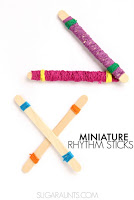

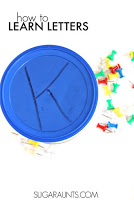

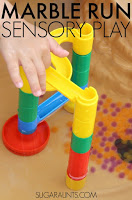
- Handwriting on Resistive Foam Trays– This fine motor activity adds heavy work resistance with a writing tool, much like a pencil is used to form letters and pre-writing lines. With this letter formation activity, children can improve endurance when writing or coloring.
- Mini Rhythm Sticks– Work on bilateral coordination, eye-hand coordination skills, pincer grasp, neat pincer grasp, and other fine motor skills.
- Push Pin Can Letters– This fine motor task is a great way to build arch development, tripod grasp, bilateral coordination, and motor planning for letter formation. Forming the letters with a resistive feedback offers a proprioceptive input to help with letter formation and kinesthetic feedback.
- Marble Run Water Table– Work on laterality with a scooping and pouring activity that offers opportunities for fine motor manipulation tasks, crossing midline, and bilateral coordination skills.
- Empathy Beads– Threading beads is a great way to work on precision, eye-hand coordination, tripod grasp, bilateral coordination. Other skills that are addressed include pincer grasp, tripod grasp, open thumb web space, in-hand manipulation, and holding and manipulating loose objects within the palm of the hand.
- Butterfly Craft– This fine motor craft challenges scissor skills with cutting a variety of resistances in papers. Work on placing materials to form the butterflies and picking up small pieces of paper against a flat surface. Glue skills are also challenged with this butterfly craft.
- Snap Block Light Sabers (Star Wars occupational therapy theme)– Snap and connect blocks to work on hand strength, wrist stability against resistance, shoulder and elbow stabilization skills. This is a great way to work on fine motor strength and endurance. You’ll find more Star Wars themed OT ideas in this post.
- Handwriting with Foam Strips- Writing on a resistive surface offers feedback to improve strength and endurance when writing. The activity also builds motor planning skills.
- Scissor Skills Flowers– Work on scissor skills with graded stopping and starting without cutting through a cupcake liner. This is a fine motor task that helps with scissor control and motor manipulation skills that carryover to many scissor skill tasks.
- Caterpillar Math– Make a cute caterpillar craft with fine motor benefits!
- Folded Paper Animals– Did you know that folding paper offers a powerful fine motor advantage? Skills addressed are finger isolation, graded resistance, finger strength, eye-hand coordination, bilateral coordination skills, and much more.
- Baby Shaker Bottles– Shaker toys are great fine motor activities for toddlers and babies. These DIY shaker bottles offer all of the visual advantages of a sensory bottle, and the auditory processing component builds a great foundation for listening and auditory discrimination skills. Use these shaker toys to work on coordination, head and upper body coordination and strengthening, positioning needs, upper extremity coordination and reach, and much more.
- Chain Link Activities– Therapists will often times have chain link toys in their therapy bag. These paper chain crafts and activities offer much of the same benefits: bilateral coordination, eye-hand coordination, precision, strengthening, motor planning, patterning, visual memory skills, and much more.
- Toys to Help With Pencil Grasp– These therapy toys are often recommended by occupational therapists for many reasons. I’ve put together toys that build the motor skills needed for a stronger pencil grasp. The toys build strength and coordination in all of the underlying fine motor skills needed for a functional pencil grasp.
- Activities to Improve Pencil Grasp– Looking to work on pencil grasp? Fine motor strength and coordination of the underlying skills and motor movements are almost always needing improved when pencil grasp suffers. These activities for a better pencil grasp are occupational therapist-approved!
- Fine Motor Christmas Tree– Work on precision, coordination, hand strength, bilateral coordination, pincer grasp, neat pincer grasp, and scissor skills, as well as other tool use: paint brush skills, and glue skills. There is a secret fine motor strengthening activity in this craft, too and it involves making the Christmas tree craft stand up!
- Snowflake Stamp Art– Work on eye-hand coordination, visual motor skills, strength, coordination, motor planning, and heavy work input with this stamping activity.
- Fine Motor Snowman Craft– This fine motor snowman craft builds coordination skills and neat pincer grasp to manipulate very small objects including small stickers.
- Fine Motor Ornament– Work on threading, hole punching, and peeling tape with this ornament craft with big fine motor benefits.
- Fine Motor Pincer Grasp Color Match– This fine motor color matching activity is a great way to work on fine motor skills including pincer grasp, tripod grasp, extended wrist, in-hand manipulation, and eye-hand coordination.
- Finger Dexterity Exercise– Work on finger dexterity and hand strength with this colorful bubble wrap activity that kids will love!
- Fine Motor Play With Crafting Pom Poms– This fine motor coordination activity is a great way to strengthen in-hand manipulation, motor planning, finger isolation, open thumb web space, and much more.
- Fine Motor Tripod Grasp with Cereal– Work on eye-hand coordination, wrist extension, bilateral coordination, grasp development, and more.
- Sparkle Collage Art– Use the art materials you have in your home to work on fine motor development with a colorful result. Builds eye-hand coordination, visual motor skills, neat pincer grasp, coloring and tool use, and much more.
- Visual-Motor Letter Match– This eye-hand coordination activity works on visual scanning, eye-hand coordination skills, precision including grasping small objects with pincer grasp.
- Bunny Scissor Tongs– Work on eye-hand coordination, crossing midline, visual motor skills, and scissor skills such as arch development, separation of the sides of the hand, and more.
- Cherry Blossom Trees– Build fine motor strength, coordination, motor planning, and eye-hand coordination skills with this cherry blossom craft.
- Fine Motor Rainbow Beads– Work on precision, threading, and pincer grasp with this threading activity. Other fine motor components include bilateral coordination, separation of the sides of the hand, in-hand manipulation, and more.
- Fine Motor Sprinkle Math– This fine motor activity challenges neat pincer grasp, in-hand manipulation, eye-hand coordination, placement and picking up of small objects.
- Smashing Peanuts– Work on hand eye coordination, graded resistance, and motor planning to break peanut shells.
- Concentric Circle Art– Use objects found in the home to work on gross motor skills, grasp, and placement to make concentric circle art.
- Fine Motor And Auditory Fireworks– This fine motor exercise works on bilateral coordination, thumb strengthening, finger isolation, eye-hand coordination, and offers heavy work input with auditory processing benefits.
- In Hand Manipulation Ideas for Kids– These fine motor ideas include different ways to build dexterity and in-hand manipulation skills. The activities challenge translation, rotation, and manipulation of small objects from the palm to the fingertips and the fingertips to the palm.
- Color Matching with Play Dough– Work on separation of the sides of the hand, in-hand manipulation, and heavy work feedback with resistance to place paper clips into different colored play dough. This is a great hand strengthening activity that improves strength and stability in the wrist as well.
- Feather Beading– This fine motor task helps with bilateral coordination, pincer grasp, tripod grasp, and motor planning skills.
- Fireworks Art– Make a fireworks craft while building precision skills, in-hand manipulation, and eye-hand coordination skills.
- Color Sort Scissor Activity– Use resistive materials to work on hand strength and scissor skills with other benefits like motor planning, crossing midline, core and upper extremity strengthening, and wrist stabilization and stability.
- Fine Motor Grow a Garden– Work on pincer grasp, bilateral coordination, motor planning, hand strength, open thumb web space, and in-hand manipulation skills with a strengthening and endurance activity.
- Play Dough and Rocks– Build hand strength and endurance by manipulating rocks in play dough.
- Fine Motor Brain Building– Work on threading and beading activity that challenges the brain to think outside the box. Kids can work “upside down” and really build shoulder and core strength that is needed for distal mobility and dexterity skills.
- Fine Motor with Keys– Work on in-hand manipulation, bilateral coordination, key grasp, and motor planning to turn keys in a fun key toy.
- Hand-Eye Coordination Cookies– Have you seen alphabet cookies? They are a great (and tasty) way to work on letter identification with motor skill benefits. Work on handwriting, visual motor skills, crossing midline, and grasp skills.
- Using Pipe Cleaners for Fine Motor Skills– This is a great fine motor activity for toddlers or preschoolers. Work on grasp development, crossing midline, bilateral coordination skills, and precision to manipulate pipe cleaners into a bottle.
- Crayon Play Dough – Play dough offers great heavy work feedback through the hands, as well as strengthening and an opportunity for heavy work through the fingers and hands. This crayon play dough recipe adds bold and vividly colored play dough and silk smooth resistance that kids will love to make AND play with!
- Fine Motor Play with Tissue Paper– This fine motor activity for toddlers and preschoolers adds an auditory feedback component to developing grasps. Work on eye-hand coordination, bilateral coordination, motor planning, grasp and release of thin materials, and much more.
- Golf Tee Hammering– Work on bilateral coordination, motor planning, hand eye coordination, strengthening of the shoulder and elbow. Hammering golf tees also offers wrist strengthening by holding the hammer in a neutral position against the resistance of hitting the hammer on the golf tee. This is a great fine motor activity that kids love!
- Fine Motor Table Top Play with Tape– Working with tape offers a pincer and neat pincer task with resistance. When placing the tape, kids need to manipulate the sticky material and position it on the surface, building coordination skills and motor planning, bilateral coordination skills, and more.
- Baked Cotton Ball Apples– Work on hand strength, bilateral coordination, resistive feedback through the hands, arch development, tripod grasp, and much more with this powerful fine motor activity.
- Pressing Too had When Writing– Pressing too hard during writing is often times a proprioceptive input issue and sensory tactics can help. But many times, fine motor skills play a part as well. Try these strategies to help with pencil pressure when kids write too lightly or with too much pencil pressure.
- Clothes Pin Scavenger Hunt– Pinching clothes pins offers a chance to build hand strength with many repetitions, adding strengthening opportunities through play and learning tasks. This activity also challenges gross motor skills.
- Fine Motor Suncatchers– Work on in-hand manipulation, placement of objects, peeling sticky backed paper with dexterity and precision, bilateral coordination, and many other skills.
More Fine Motor Activities
- Pencil Control Worksheets – Build the motor planning skills needed to manipulate and maneuver a pencil within a writing space.
- Manipulating Coins– Work on in-hand manipulation skills to hold and move coins from the palm of the hand to the fingertips and vice versa.
- Pipe Cleaners Cardboard Box – Address bilateral coordination skills in a fine motor challenge that kids love. Work on shoulder and wrist stability as well as tripod grasp.
- Icicle Scissor Skills– Work on scissor skills with a visual motor activity that helps kids with crossing midline, cutting simple shapes, and graded resistance.
- Sunflower Craft– Pick up and manipulate handfuls of seeds with in-hand manipulation skills, arch development, and hand strengthening with this sunflower craft.
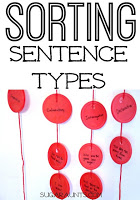

- Valentines Day Color Sort– Sort and manipulate beads with a fine motor precision activity that builds in-hand manipulation, bilateral coordination, and motor planning skills.
- Baby Safe Water Beads– This fine motor (and gross motor) activity is great for babies and toddlers.
- Torn Paper Art– Tearing paper offers resistive feedback and a hand strengthening activity for kids. Work on stopping and starting at specific points and not tearing through to the edge of the page. This is a great fine motor skill craft!
- Olive Thumbprint Art– Build finger isolation skills, separation of the sides of the hand, and eye-hand coordination skills.
- Crayon Floam– Work on hand and finger strength.
- Turtle Thumbprint Art– Develop finger isolation, separation of the sides of the hand, eye-hand coordination skills, and more.
- Stress Reducing Sensory Bin– Work on gross grasp, hand strength, and more with this fine motor strengthening sensory bin.
- Body Wash Play Dough– Develop tolerance to tactile sensory materials and work on fine motor skills like pinch, grip, and hand strength with scented play dough.
- DIY Glass Gems– Address precision, manipulation skills, eye- hand coordination, bilateral coordination, and motor planning skills to pick up and manipulate these visual processing tools.
- Tools to Help with Fine Motor Development
- Fine Motor Color Math– Work on tripod grasp on a vertical surface to build eye hand coordination, arch development, open thumb web space, and shoulder and wrist stability.
- Scissor Skills Activities
Even More Fine Motor Activities:
Create Your Own Race Track
Spring Sensory Seek and Find
Sensory Soup with Fine Motor Sorting
Fine Motor Strengthening with Color Match
Cereal Box Fine Motor Coordination Activity
DIY Lacing Cards
Manipulating Coins Fine Motor Skills
Best Fine Motor Play Ideas for Kids
Tripod Grasp with Pipe Cleaners
Textured Shaving Cream Play Finger Isolation
Pom Pom Snowflake Line Awareness Craft
Sight Word Scooping
Golf Tee Hammering
Honey Bee Pinch Pins
Invitation to Scoop and Pour
Spring Themed Play Dough Press
Indoor Snow Painting, scooping, mixing
Paint Baggie Letter Formation
Light Bright Fun
Need some specifics? Fine motor skills are essential for independence in handwriting and scissor skills.
Fine Motor Skills and Handwriting
Read more about fine motor skills and how they impact handwriting.
Fine motor skills are essential in the classroom, and they can impact learning. For more information, check out this resource on fine motor skills needed in the classroom.
Here is a resource on cursive writing, much of which requires pencil control, in-hand manipulation, and motor planning of fine motor movements in order to form letters. While there is evidence of cursive handwriting being a more efficient and functional form of written work in the child with dysgraphia or other handwriting concerns, there is a component of fine motor dexterity needed for cursive writing.
Fine Motor Skills and Scissor Skills
As an occupational therapist, working on scissor skills with kids is one of my favorite goal areas. There are so many ways to get creative with modifications to paper, lines, and scissors. The fine motor activities that work on the muscles and dexterity needed for scissor use are fun, too! Stop back soon as we add new activities all the time.
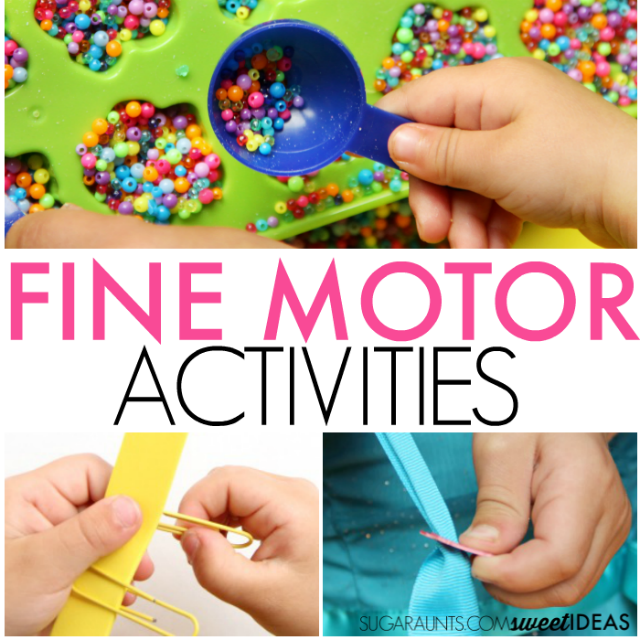

Fine Motor Activities based on Skill Area:
How to Practice Fine Motor Skills
Simple activities that use the small muscles of the hand are ideal for practicing fine motor skills. While child development and age level plays a role in the practicing of fine motor activities, these fine motor practice ideas can be simple ways to develop hand strength, coordination, pinch, and dexterity:
- Use tweezers to drop crumbled paper into a cup
- Pinch, squeeze, and roll playdough
- Manipulating clothing fasteners: zipping zippers, buttoning buttons, snapping snaps, connecting belt buckles, tying shoes
- Placing beads into ice cube trays
- Squeezing colored water with pipettes into cups
- Tracing stencils
- Cutting straws into small pieces and threading them onto a pipe cleaner
- Cutting yarn and gluing it onto paper
- Positioning rubber bands around small toys…and then taking the rubber bands back off again.
- Playing board games. These board games are great for developing pencil grasp.
Why is Fine Motor Important?
We’ve already covered many of these areas, but in the world of occupational therapy, fine motor development is essential for functional participation. SO many daily tasks are impacted by fine motor development. This functional participation allows us to learn, grow, and interact with the world around them.
In children, fine motor skills allow them to experience the world around them.
- Fine motor skills enable feeding- Development of fine motor skills through play enables grasp of food, utensils, and the ability to scoop food, hold a cup without spilling, cut with a knife, spread butter or peanut butter, cut food, use a fork. Other considerations include opening food containers, managing a lunch box, opening and closing plastic food baggies, holding a tray of food, and much more.
- Fine motor skills enable grooming and hygiene- With the development of fine motor skills, we are able to hold grooming utensils such as combs and toothbrushes, squeeze toothpaste, pick up small objects, use tweezers, open containers, squeeze out a “just right” amount of shampoo, conditioner, or lotion, use and wash with a washcloth, manipulate and hold soap, and much more.
- Fine motor skills enable handwriting skills- holding a pencil, using a functional pencil grasp, coloring, writing at the correct pencil pressure, erasing, and much more.
- Fine motor skills impact scissor use– This includes holding scissors, cutting shapes, manipulating paper, cutting with correct speed, starting and stopping scissors at the appropriate place, and much more.
- Fine Motor Skills and Clothing management- Getting dressed is greatly impacted by fine motor development. Tasks such as managing buttons, zippers, snaps, buckles, shoe tying, hair ties, and other clothing tasks require fine motor strength and dexterity.
This is only the beginning. Relatively every functional task that we do includes aspects of fine motor. Consider your daily tasks. In every way, fine motor skills are included in some manner or another. From seat belt buckles to typing a message on your phone. Fine motor activities are a part of every day, all day long.
EXPLORE Popular Topics
What do all these words mean?


